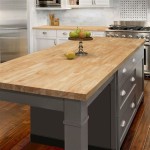Consumer Reports Best Countertop Microwaves: A Guide to Selecting the Right Model
The countertop microwave oven is a ubiquitous appliance in modern kitchens, providing a convenient and efficient method for reheating food, cooking quick meals, and even defrosting ingredients. Consumer Reports, a non-profit organization dedicated to unbiased product testing and consumer advocacy, regularly evaluates countertop microwaves based on various performance metrics, features, and user experience. This article analyzes Consumer Reports' findings to guide consumers in selecting the best countertop microwave for their needs, covering key performance areas, important features, and top-rated models.
Selecting a countertop microwave involves considering several factors beyond simply price. Cooking performance, evenness of heating, defrosting capabilities, ease of use, and noise levels all contribute to overall satisfaction. Consumer Reports subjects microwaves to rigorous testing to assess these aspects, providing valuable data for informed decision-making. This analysis synthesizes that data, presenting a framework for choosing the ideal appliance.
Key Consideration 1: Cooking Performance and Even Heating
One of the primary functions of a microwave oven is to cook food quickly and evenly. Consumer Reports tests this aspect by evaluating how well microwaves cook common items, such as baked potatoes, frozen dinners, and popcorn. The ability to cook food thoroughly and without hot spots or cold spots is crucial for achieving optimal results.
Even heating is particularly important for preventing foodborne illnesses and ensuring that all parts of the dish are cooked to a safe temperature. Microwaves with rotating turntables generally perform better in this area, as they distribute the microwaves more evenly throughout the food. However, the design and efficiency of the microwave's internal components also play a significant role. Consumer Reports' testing involves measuring the temperature distribution in test subjects to determine the evenness of heating. Microwaves that consistently produce uniform heating patterns receive higher ratings in this category.
Power levels also influence cooking performance. A microwave with a higher wattage typically cooks food faster, but it may also be more prone to causing uneven heating or overcooking certain areas. Microwaves with adjustable power levels offer greater flexibility, allowing users to fine-tune the cooking process for different types of food. Consumer Reports evaluates the accuracy and consistency of these power levels to determine their effectiveness. A microwave that accurately delivers the selected power level ensures more predictable and consistent cooking results.
Key Consideration 2: Defrosting Capabilities
Defrosting food is another common use for countertop microwaves. The ability to defrost food quickly and evenly without partially cooking it is essential for preserving its quality and texture. Consumer Reports assesses defrosting performance by evaluating how well microwaves defrost frozen food items, such as ground beef or chicken breasts, without leaving cooked edges or cold centers.
Microwaves with dedicated defrosting cycles often perform better in this area, as they are programmed to gradually increase the power level and rotate the food to ensure even thawing. Some microwaves also offer specific defrosting settings for different types of food, allowing users to customize the defrosting process for optimal results. Consumer Reports evaluates the effectiveness of these defrosting cycles by measuring the temperature distribution in the defrosted food and assessing its overall quality.
The weight or serving size of the food being defrosted also affects the defrosting time. Microwaves with accurate weight sensors can automatically adjust the defrosting time based on the size of the food, reducing the risk of over- or under-defrosting. Consumer Reports tests the accuracy of these sensors by comparing the actual weight of the food with the microwave's estimated weight and evaluating the resulting defrosting time.
Key Consideration 3: Ease of Use and Features
Beyond cooking and defrosting performance, ease of use is a crucial factor in overall satisfaction with a countertop microwave. This includes the intuitiveness of the control panel, the clarity of the display, and the convenience of the features. Consumer Reports assesses ease of use by evaluating how easy it is to program the microwave, adjust the settings, and clean the interior.
Microwaves with clearly labeled buttons and a user-friendly interface are generally easier to operate, especially for users who are unfamiliar with microwave technology. A bright and easy-to-read display is also important for monitoring the cooking time and settings. Some microwaves offer programmable presets for commonly used functions, such as reheating leftovers or cooking popcorn, further enhancing ease of use. Consumer Reports evaluates the clarity and intuitiveness of the control panel and display to determine their impact on the overall user experience.
Several other features can also contribute to the convenience and functionality of a countertop microwave. These include sensor cooking, which automatically adjusts the cooking time based on the food's moisture content; child lock, which prevents accidental operation; and interior lighting, which allows users to monitor the cooking process. Consumer Reports evaluates the effectiveness and usefulness of these features to determine their value to consumers.
Cleaning the interior of a microwave can be a tedious task, but some microwaves are designed with features that make it easier. Microwaves with easy-to-clean surfaces and removable turntables are generally more convenient to maintain. Some microwaves also offer a steam cleaning function, which softens food residue and makes it easier to wipe away. Consumer Reports evaluates the ease of cleaning by assessing the materials used in the microwave's interior and testing the effectiveness of any cleaning features.
Noise Levels and Other Considerations
The noise level of a countertop microwave can be a significant factor, especially for households with young children or those who prefer a quiet kitchen environment. Consumer Reports measures the noise level of microwaves during operation to determine how disruptive they are. Microwaves with lower noise levels receive higher ratings in this category.
The size and capacity of the microwave are also important considerations, depending on the user's needs and available counter space. Microwaves are typically measured in cubic feet, with larger models offering more space for cooking larger dishes. However, larger microwaves also take up more counter space and may be more expensive. Consumer Reports provides information on the dimensions and capacity of each microwave they test, allowing consumers to choose a model that fits their needs and space constraints.
Durability and reliability are also important factors to consider when selecting a countertop microwave. Consumer Reports gathers data on product reliability from its member surveys, providing insights into the potential lifespan and repair frequency of different microwave models. Choosing a microwave from a reputable brand with a history of reliability can help ensure a longer and more trouble-free ownership experience. The organization's surveys take into account reported issues within a specific timeframe and provides a reliability rating based on the severity and frequency of the problems reported.
Energy efficiency is another consideration, particularly for environmentally conscious consumers. Microwaves consume energy during operation and when idle. Energy-efficient microwaves use less energy to cook food and have lower standby power consumption, reducing their overall environmental impact. Consumer Reports measures the energy consumption of microwaves during operation and standby mode to assess their energy efficiency.
The aesthetic design of a countertop microwave can also be a factor in the selection process. Microwaves are available in a variety of styles and colors to complement different kitchen decors. While aesthetics are subjective, Consumer Reports typically offers commentary on the overall design and build quality of the microwaves they test. The choice of stainless steel, black, white or other finishes might be a factor for some customers, where others might prioritize internal functionalities over external styles.

Best Countertop Microwaves Of 2025 Consumer Reports

Best Microwaves Of 2025 Consumer Reports

Best Small Microwaves Consumer Reports

Cuisinart Cmw 110 Microwave Oven Review Consumer Reports

The Best Countertop Microwaves Of 2025 Tested By Experts

Magic Chef Hmm770b Microwave Oven Review Consumer Reports

Cuisinart Em0p042dg Microwave Oven Review Consumer Reports

Lg Neochef Mser1590s Microwave Oven Review Consumer Reports

Chef Chm770b Microwave Oven Review Consumer Reports

Chef Chm990b Microwave Oven Review Consumer Reports
See Also








